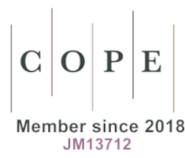Cultural Ecosystem of Creative Place: Creative Class, Creative Networks and Participation in Culture
DOI:
https://doi.org/10.1515/ipcj-2017-0010Keywords:
Creative places, participation in culture, cultural ecosystemsAbstract
The scope of this paper is to conceptualise a data-based research framework for the role of creative networks in cultural exchange. Participation in culture measured as audience per 1000 residents and expenditures on culture-related activities were analysed in relation to such territorial assets as accessibility to creative infrastructure, the economic status of residents, the governance networks of civil society, and cultural capital. The results indicate how accessibility, governance networks, and cultural capital contribute to participation measured via audience indicators while a low poverty rate has explanatory value with respect to expenditures on culture.
Downloads
References
Alcamo, J., et al. Ecosystems and Human Well-being: A Framework for Assessment, Island Pres. London: Washington, Covelo, 2003.
Google Scholar
Bonet, L., Donato, F. “The Financial Crisis and Its Impact on the Current Models of Governance and Management of the Cultural Sector in Europe,” ENCATC Journal of Cultural Management and Policy, Vol. 1 (1) (2011): 4–11.
Google Scholar
Bourdieu, P. “Cultural Reproduction and Social Reproduction.” [In:] Power and Ideology in Education. Eds. J. Karabel and A. H. Halsey, New York, NY: Oxford University Press, 1977, 487–511.
Google Scholar
Florida, R. The rise of the creative class–and how it is transforming leisure, community and everyday life. New York: Basic Books, 2002.
Google Scholar
Kay, P.L., Wong, E., Polonsky, M.J. “Marketing cultural attractions: understanding non-attendance and visitation barriers.” Marketing Intelligence & Planning, Vol. 27, Issue 6 (2009): 833–54. DOI http://dx.doi.org/10.1108/02634500910988717
Google Scholar
Laaksonen, A. Making culture accessible. Access, participation in cultural life and cultural provision in the context of cultural rights in Europe. Strasbourg: Council of Europe, 2010.
Google Scholar
Mackiewicz, M., Michorowska, B., Śliwka, A. Analiza potrzeb i rozwoju przemysłów kreatywnych. Raport końcowy. Warszawa: ECORYS, 2009.
Google Scholar
Milcu, A.I., Hanspach J., Abson D., and Fischer J. “Cultural ecosystem services: a literature review and prospects for future research.” Ecology and Society, 18 (3) (2013): 44. http://dx.doi.org/10.5751/ES-05790–180344
Google Scholar
Reid, W.V. et al. Ecosystems and Human Well-Being, Millennium Ecosystem Assessment. London: Island Press, Washington, Covelo, 2005.
Google Scholar
Throsby, D. The concentric circles model of the cultural industries, Cultural trends, Vol. 17, Issue 3 (2008): 147–64, http://dx.doi.org/10.1080/09548960802361951
Google Scholar
Tzansakis, M. Bourdieu’s Social Reproduction Thesis and The Role of Cultural Capital in Educational Attainment: A Critical Review of Key Empirical Studies, Vol. 11, no. 1 (2011): 76–90.
Google Scholar
UNESCO (2016), Creative Cities for Sustainable Development, [in:] en.unesco.org/creative-cities/ (access 14.11.2016).
Google Scholar
Vigoda, E. “From Responsiveness to Collaboration: Governance, Citizens and the Next Generation of Public Administration,” Public Administration Review, Vol. 62 (5) (2002).
Google Scholar
Van Der Borg, J., Russo, P. A. The Impacts of Culture on the Economic Development of Cities. Rotterdam: Euricur, 2005.
Google Scholar
Varbanova, L. Strategic Management in the Arts. London: Routledge, 2013.
Google Scholar
Yencken, D. “The creative city,” Meanjin, Vol. 47, no. 4, Summer (1988): 597–608.
Google Scholar
Downloads
Published
How to Cite
Issue
Section
License
Copyright (c) 2017 International Studies. Interdisciplinary Political and Cultural Journal

This work is licensed under a Creative Commons Attribution-NonCommercial-NoDerivatives 4.0 International License.

















